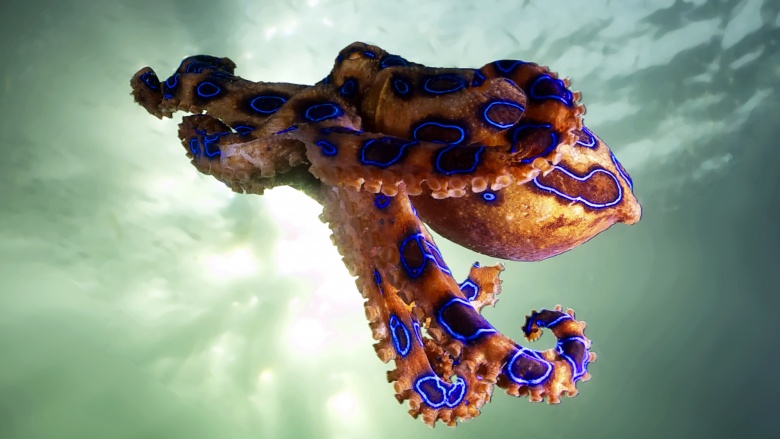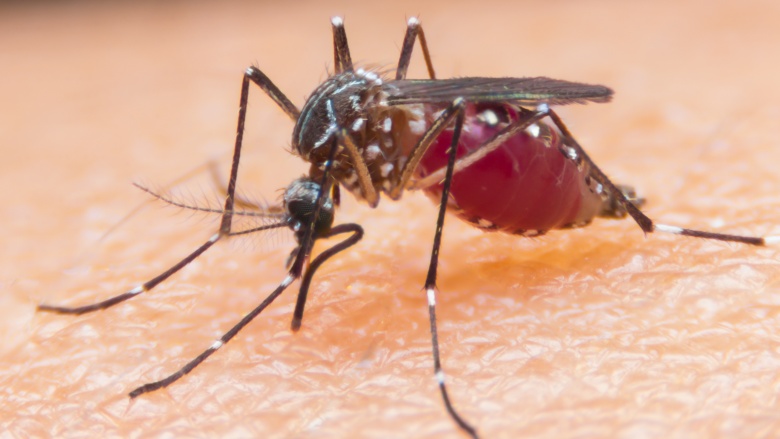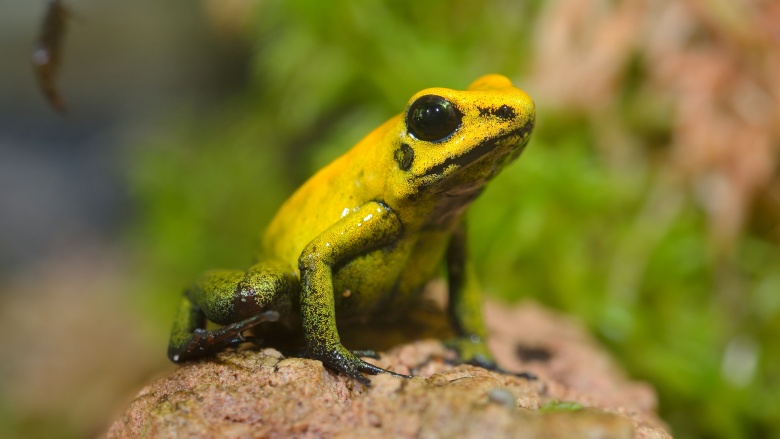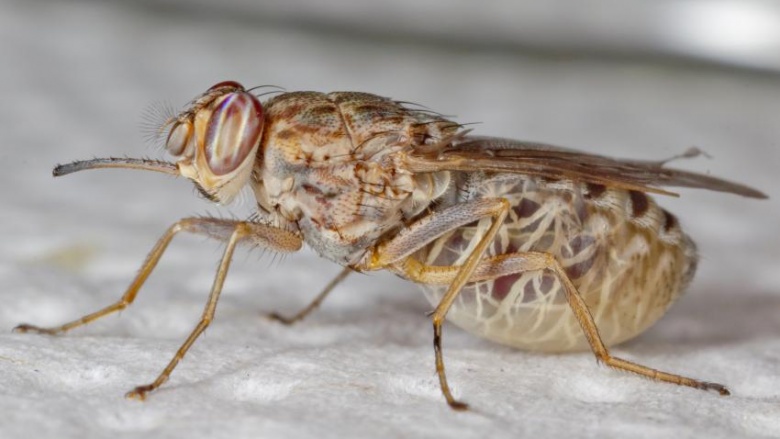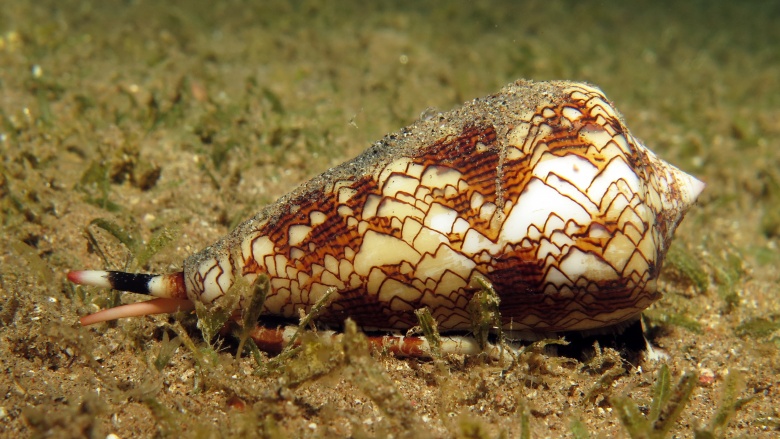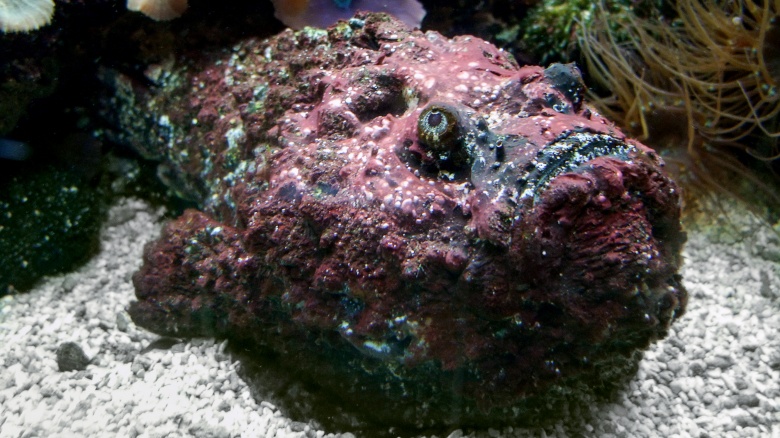The Smallest Lethal Creatures On The Planet
When you think of dangerous animals, your brain is likely flooded with images of the proverbial lions, tigers, and bears. This makes sense: after all, our African ancestors were very accustomed to running away from, or else falling prey to, predatory cats and other large carnivores. Yet there are much smaller creatures that pose similar, and even greater, threats to your health and safety. Below are a few of these teensy menaces.
Blue-ringed octopuses
This small, colorful octopus can really throw a wrench into your beach trip. Although it only measures four to six inches, the blue-ringed octopus is among the most venomous creatures found in the Earth's oceans. Its range includes the eastern Indian Ocean and as far north as Japan in the western Pacific Ocean. Appropriately enough, it also resides off the coasts of Australia — home to a vast array of man-killing critters.
These blue-ringed octopuses incapacitate their prey with a poisonous bite. Their venom, known as tetrodotoxin, can quickly cause respiratory failure in human beings — there are at least three confirmed deaths from the creature's bite. Fortunately, your chances of survival are high if you immediately seek medical treatment. Also, the blue-ringed octopus is more apt to flee than to fight. It will only give you a nibble if it feels backed into a corner. So, you know ... don't do that.
Mosquitoes
It's difficult to refute the claim that mosquitoes are the most dangerous animals on the planet. These small, blood-sucking insects carry a number of deadly and devastating diseases, including malaria, yellow fever, the West Nile virus, and the Zika virus. It's estimated that approximately 725,000 people worldwide die each year from mosquito-borne diseases. Malaria alone killed 438,000 people in 2015. About 90 percent of these occurred in Sub-Saharan Africa. Is OFF! mosquito repellent sold in bulk?
Golden Poison Dart frogs
Belay your urge to lick this colorful amphibian, hippie. A single two-inch-long Golden Poison Dart Frog contains enough poison to kill ten men. The diminutive amphibian is only found in a small rainforest near Colombia's coast, so at least you know where not to go. This endangered frog secretes poison from glands beneath its skin, as a way to deter predators. Needless to say, any animal who takes a bite out of this frog probably won't live to make the same mistake again. In fact, the poison is so toxic, indigenous peoples of the region used it to the poison on the tips of their blowgun darts. Now that's chemical warfare.
Tsetse flies
Vampires are supposed to be attractive creatures, right? It's safe to say that the African tsetse fly didn't get that memo. This half-inch long, bloodsucking little beast is known to pass parasites that cause African sleeping sickness in its human victims. This disease affects the human neurological system, and is usually fatal if left untreated. Several epidemics of sleeping sickness occurred during the twentieth century, but through the efforts of the World Health Organization and NGOs, the disease is no longer as widespread. The majority of new cases over the past 10 years are in one country: the Democratic Republic of the Congo. Luckily, in 2014, Congo reported fewer than 4,000 cases of the disease. This is the lowest number of new cases since recording began, about 75 years ago.
Geographic Cone snails
A snail is likely not high on most people's lists of dangerous animals . Nevertheless, the geographic cone snail is one of the most venomous creatures found in the Indian and Pacific Oceans. These snails can grow to be about six inches long, and deliver venom through a tooth that they can shoot out like a harpoon. No antivenom exists for the snail, so medical professionals simply keep victims alive until the venom wears off. Deaths are rare, but about 30 people have succumbed to cone snails' venom. Our advice? Be careful when you're collecting shells.
Bats
Bats are important to the world's ecosystems. Many bats, for example, are insectivores that devour mosquitoes and other pests. Still, these flying mammals can be disease carriers. Rabies is rare in the United States, but those who do contract the potentially fatal disease usually do so through interacting with bats. From 1997 to 2006, there were 19 confirmed cases of naturally-contracted rabies in the United States. Of these, 17 were from bats. Latin America and the Caribbean, in comparison, saw 63 cases of rabies attributed to bats from 2010-2013.
Sometimes, a bat may bite a sleeping victim at night without awakening them. As a result, it may be too late to treat the rabies by the time the victim displays symptoms. It's therefore important to bat-proof your home, no matter how scared you are that the Joker's gang will attack you.
Fleas
Along with costing you hundreds of dollars per year at the pet store, the flea is historically one of the world's most dangerous insects. Notably, the flea spread the bubonic plague throughout Europe during the fourteenth century. Fleas contracted the disease from infected rats and, after jumping off their rodent hosts, would land on an unsuspecting human, bite them, and transmit the disease. Approximately 20 million people died of the plague in Europe. Thankfully, the modern plague is easily treatable with antibiotics, with virtually all new cases found in Sub-Saharan Africa.
Aside from the plague, fleas are also known to transmit less serious conditions to humans, like tapeworms and cat-scratch fever. Careful with that last one because, according to renowned doctor Ted Nugent, the cure for cat-scratch fever is flawed, and will simply leave you with more of it.
Stonefish
Stonefish range in size from 12-15 inches in length. Its name comes from its appearance, which looks remarkably like a stone lying on the ocean floor. Its appearance as a grumpy Sesame Street muppet belies the fact that it is one of the most venomous fish in the world. It's also versatile, as a stone fish can inject a human with venom from all thirteen of its spines. This typically happens when some unsuspecting swimmer steps on it or threatens it in some way. A sting to the chest or abdomen is particularly dangerous, and the venom can be fatal if left untreated. Make no mistake — while deaths don't happen all that often, they do happen. Stars and Stripes reported in 2010 that a diving instructor died after being stung by a stonefish off the coast of Okinawa, Japan.

